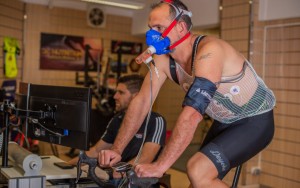What is the economy of cycling and why is it essential for your performance?
Cycling is a sport where the strongest doesn't always win. Managing the available energy and our strength to use them in the decisive moments of the races is essential to become a winning cyclist. An equation in which we can maximize the result if, in addition, we are able to, with the same effort, spend less than our rivals.

Saving energy, the key to victory in cycling. Improving the economy of vital effort to achieve it.
You have probably heard of the CBR tactic, which stands for Eat, Drink, and Draft. An expression that simply summarizes one of the maxims of cycling that suggests that you must always keep your energy levels as high as possible, both by replenishing what is spent and by saving efforts. A tactic that aims to have the maximum strength when we reach the decisive moment of the races or simply during the weekend rides with our group.
As in any endurance sport, a concept related to energy that a cyclist can save is the economy of effort, which expresses how efficient that cyclist is at a certain level of intensity, so the cyclist with more effort economy will be more efficient and will need less energy than their rivals.
RECOMENDADO

Complete list of the highest paid cyclists of 2025

Shimmy Effect: why some bikes become uncontrollable when going downhill

How many calories are burned when cycling

Climbing sitting or standing, which is better?

What is heart rate variability and how does it affect the cyclist?

Fat Max Training to efficiently eliminate fat

The economy of effort involves many factors, from the savings achieved through aerodynamics, reduced weight to need fewer watts on climbs, or perfectly adjusted and high-quality material to minimize rolling resistance.
However, the term economy of effort usually focuses more on the metabolic aspect, that is, the body's efficiency in generating watts with a certain energy expenditure. Obviously, the goal will be, by adjusting the training, to generate the maximum power with the least possible consumption.
How to improve the economy of effort
When working on the economy of effort, there are several things we can do to make our body more efficiently manage energy, starting, as it could not be otherwise in an endurance sport, precisely with low-intensity volume work. Aerobic training, sometimes underestimated in an era where quick results are sought and high-intensity training seems to replace endurance training, remains key to building a physical base that allows us to grow on solid foundations.
Long-duration aerobic training helps improve the efficiency of cells so that fatty substrates can be mobilized and used more easily, an almost inexhaustible source of energy in the body, and, most importantly, doing it at higher effort levels.

Strength is another aspect historically overlooked in cycling and to which more importance is being given. Obviously, with properly trained muscle mass, we can generate more power on the pedals with the same effort level, which ultimately translates into more watts. Additionally, well-adapted muscles support and recover better from high-intensity efforts.
The last aspect, also generally quite forgotten, has to do with biomechanics and pedaling technique. Pedaling in a circular motion, exerting most of the force on the downstroke of the pedal and being able to assist in the upstroke to prevent the leg recovery from subtracting instead of adding. Applying force as tangentially as possible to the pedal stroke or being able to pass through the dead spots that occur in the vertical of each pedal stroke can provide a significant energy bonus.
Like other aspects of cycling, pedaling technique is also trainable, although the longer we have been riding a bike and the more internalized our pedaling gesture is, the more difficult it will be to change.

To work on pedaling technique, you will need optimal biomechanical adjustment and apply a series of exercises, such as the classic single-leg pedaling, which will help you become more efficient over time and waste less energy with each pedal stroke.
In any case, the final result of applying all these techniques will be the desired one, being able to go faster while spending less, the holy grail of every competitive cyclist whose performance is the primary goal.